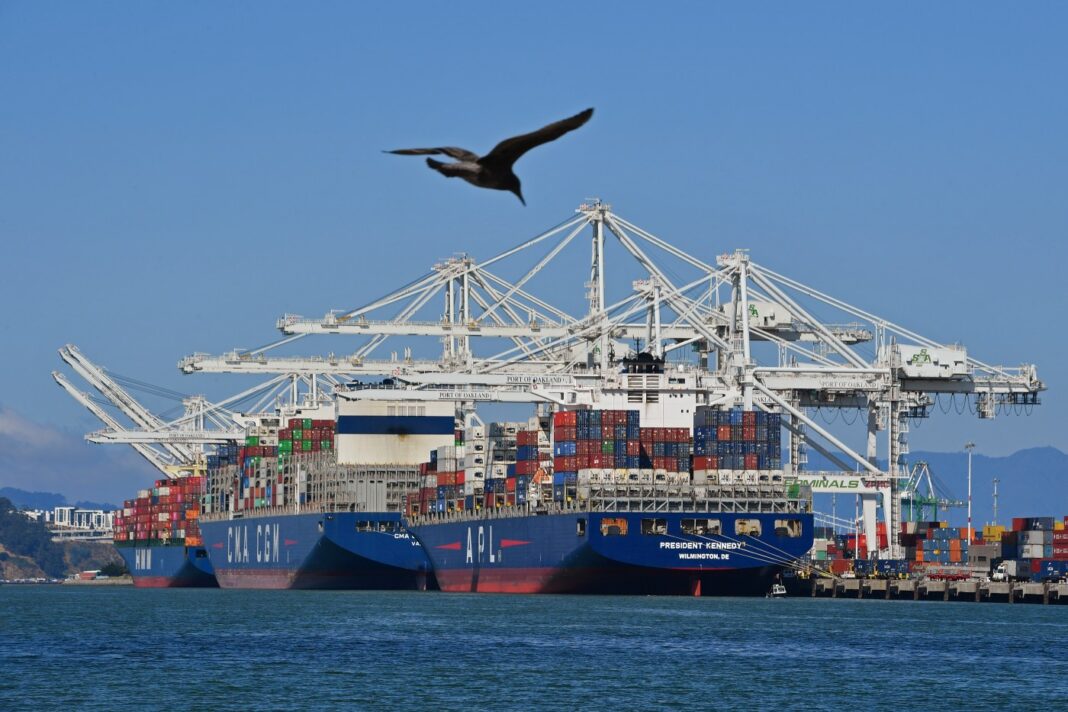In a move cheered by environmentalists and public health groups but opposed by the oil industry, the Biden administration has approved new rules aimed at reducing the amount of air pollution emitted by large ships when they are docked at ports along the state’s coastline. The ships — which can be more than 800 feet long and 100 feet wide — emit soot from huge diesel engines and boilers when they are sitting at the dock, sometimes for days. That pollution can affect communities in waterfront cities like Oakland, Richmond, Los Angeles, Long Beach and San Diego, increasing the risk of asthma, heart attacks and other health problems.
Since 2007, California has required large cargo ships and cruise ships to plug in to the local power grid to obtain electricity when they arrive at a port, so their engines and boilers don’t idle, a practice that reduces air pollution. The , approved by the U. S.
Environmental Protection Agency on Wednesday and published in the on Friday, expand those requirements to include oil tankers, chemical tankers and car-carrying ships. They will be phased in between now and Jan. 1, 2027.
Officials with the California Air Resources Board say tankers and car carriers emit 56% of all the particulate pollution from ships at berth in California, and that the new rules, which it passed in 2020, will save 237 lives, and yield $2. 3 billion in public health savings by 2032. “Pollution from ocean-going vessels is causing poisonous air for people living near the ports and is increasing regional smog,” said Bill Magavern, policy director at the Coalition for Clean Air, an environmental group with offices in Sacramento and Los Angeles.
“This rule will help people in port communities and in California coastal regions breathe healthier air. ” Air pollution in port cities spiked during the COVID pandemic, when dozens of ships backed up at ports. The shipping industry opposed the new California rules.
It objected to the way that emissions are calculated. Under the original rule, total emissions from a company’s shipping fleet at the dock had to be reduced 50% by 2014 from 2007 levels, then 70% by 2017 and 80% by 2020. The new rule requires a 90% reduction, but from each ship, rather than from a fleet average, said Mike Jacob, vice president of the Pacific Merchant Shipping Association, an industry group in Oakland.
“We already are under an existing rule,” Jacob said. “We think the way it occurs right now is better. We have invested over $1.
5 billion in shore-power infrastructure. We felt going through another process for determining whether or not you are compliant was like ‘if it ain’t broke don’t fix it. ‘” The oil industry is suing over the new rules.
A tanker can comply if it either plugs into the power grid at the dock, or if it puts in place an exhaust-scrubbing device that captures the fumes from its diesel engines and boilers and cleans them. In September 2020, the Western States Petroleum Association sued the California Air Resources Board, claiming that the technology hasn’t been invented yet for such scrubbing devices to meet the tough standards that the air board imposed. The association, whose members include companies like Chevron and ExxonMobil, lost In March, it filed an appeal.
“Right now the technology doesn’t exist to the degree that the emissions have to be capped,” said Kara Greene, a spokeswoman for the Western States Petroleum Association. “The air resources board says it will be. But there are no venders for it now.
” Environmental groups note that the California Air Resources Board, first established by former Gov. Ronald Reagan in 1967 to reduce smog, often passes rules setting standards higher than current technology can achieve. The goal is to push industry to invent it by a looming deadline.
In recent years, as California’s smog levels have fallen, the agency has continued to tighten regulations on a wide variety of sources of soot pollution — called particulate pollution — including from trucks, locomotives and other sources. Such pollution can lodge deep in the lungs of people who regularly breathe it, increasing the risk of asthma, cancer, heart attacks and other ailments, particularly in low-income communities near ports, freeways, power plants, factories and rail yards. Under the federal Clean Air Act, signed by former President Richard Nixon in 1970, California is allowed to set its own air pollution rules that are tougher than federal standards.
If the EPA approves, then other states can copy California’s rules. The Trump administration worked to deny California rules for autos, but the Obama and Biden administrations have approved them. Oftentimes, when California’s more stringent smog rules go into force, at least a dozen other states, including New York, copy them, and they eventually become the national standard.
Environmental groups this week urged other states to copy California’s new shipping pollution rules. They also urged California regulators to impose additional smog rules on ships as they sail through state waters, not just when they are sitting at the dock. “It’s always good to see California in the driver’s seat on air pollution issues, and it’s especially good to see EPA back the Golden State,” said Regina Hsu, a senior attorney with Earthjustice, an environmental group based in San Francisco.
.
From: mercurynews
URL: https://www.mercurynews.com/2023/10/20/new-rules-approved-to-reduce-air-pollution-from-ships-at-california-ports/



